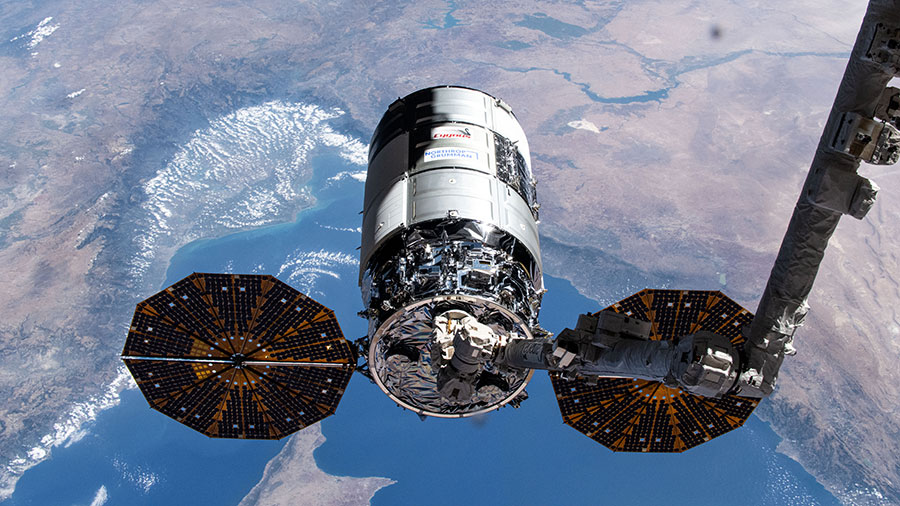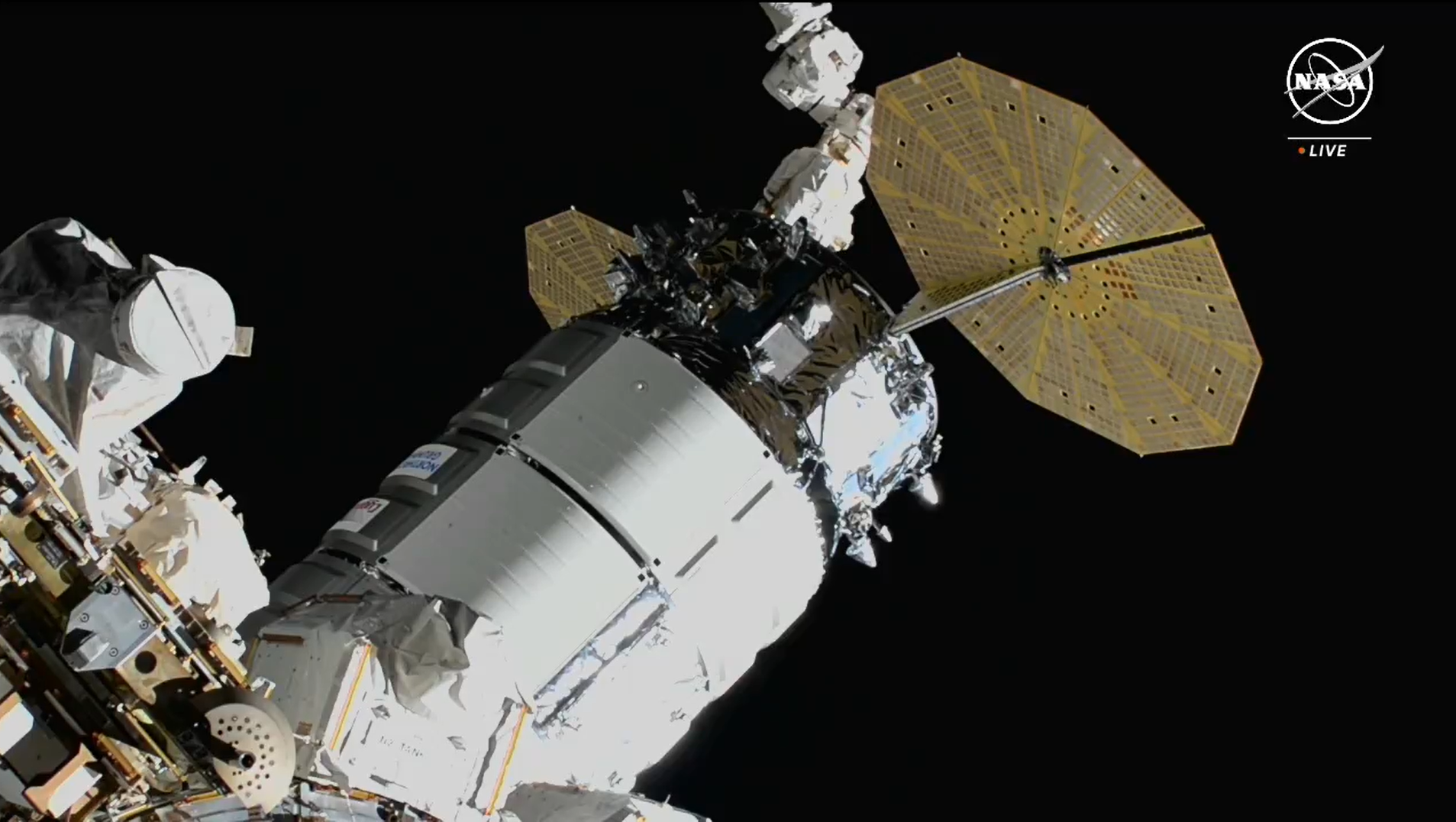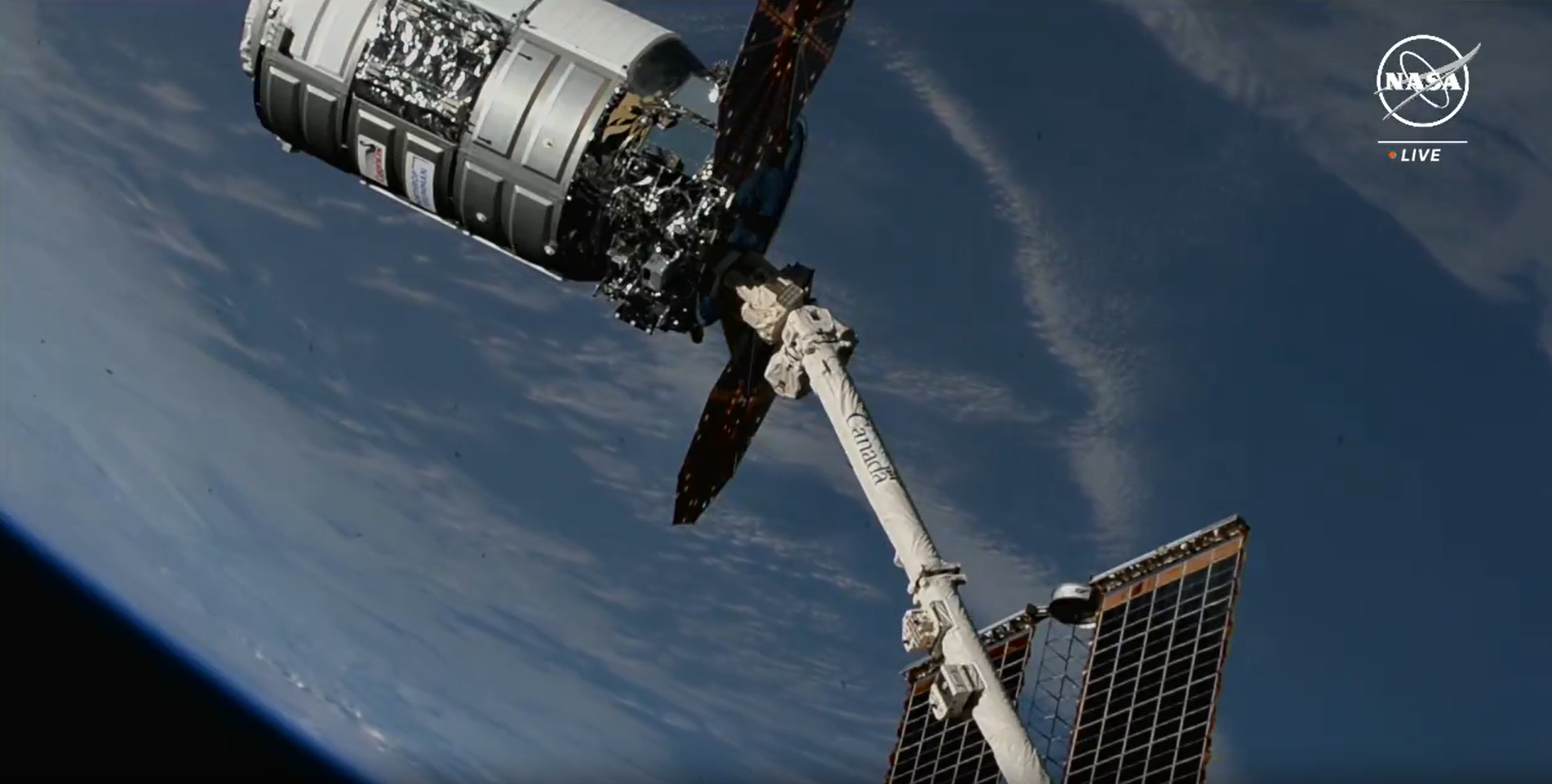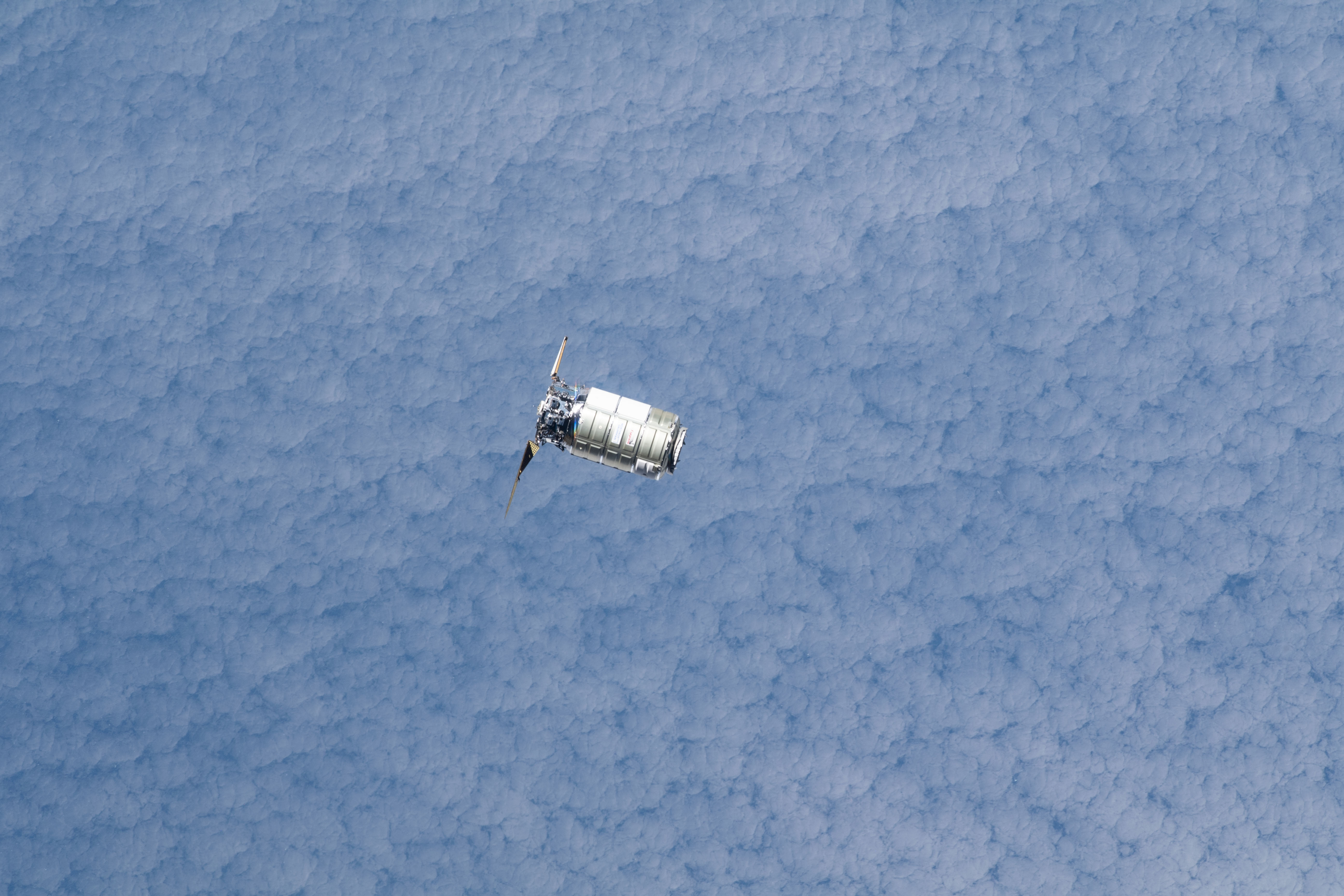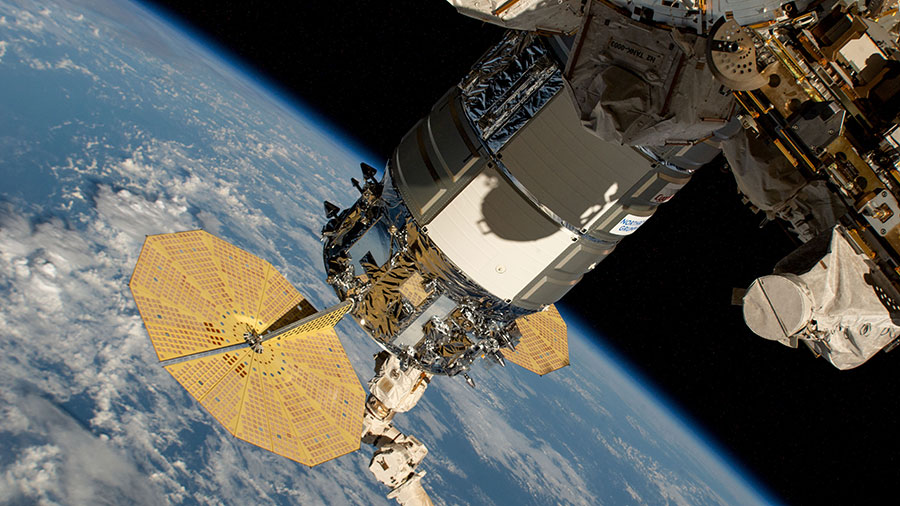
The nine orbital residents living and working aboard the International Space Station wrapped up the work week with a science-filled day exploring space biology, physics, and robotics. Cargo transfers and lab inspections rounded out the day for the Expedition 71 and Boeing Crew Flight Test crews.
NASA Flight Engineer Jeanette Epps had a busy day on Friday supporting a pair of different experiments before leading an eye examination at the end of the day. She started her day in the Kibo laboratory module configuring a free-flying camera robot from JAXA (Japan Aerospace Exploration Agency) and the Astrobee robotic assistant for an upcoming educational challenge. Students on Earth compete to write software that is uploaded to the orbital outpost and controls and maneuvers the devices to encourage and promote the next generation of scientists, engineers, and leaders. Next, she installed research hardware into Kibo’s Cell Biology Experiment Facility to incubate and illuminate seeds for the Plant UV-B botany study. Finally, she peered into the eyes of Starliner Commander Butch Wilmore of NASA using standard medical imaging hardware to check the health of his retina, cornea, and lens.
Wilmore began his day continuing to unload new science and supplies packed inside the Cygnus space freighter that arrived early Tuesday. Afterward, he partnered with fellow crewmate and Starliner Pilot Suni Williams of NASA on standard safety inspections and photographed emergency hardware for further analysis on the ground. Earlier, Williams worked inside the Tranquility module filling water tanks, conducting leak checks, and installing new orbital plumbing gear in the station’s restroom, also known as the waste and hygiene compartment.
The orbital lab’s three other NASA astronauts, Tracy C. Dyson, Matthew Dominick, and Mike Barratt, serviced a variety advanced research hardware to ensure ongoing critical space research. Dyson set up the KERMIT state-of-the-art microscope in the Destiny laboratory module and imaged stem cell samples for a cancer treatment investigation. Dominick replaced components inside the Electrostatic Levitation Furnace that supports safe observations of microgravity’s effect on materials exposed to high temperatures. Barratt removed an outmoded sample processing device from Kibo, packed it for return to Earth, then replaced it with an updated sample processor recently delivered aboard Cygnus.
Roscosmos Flight Engineers Nikolai Chub and Alexander Grebenkin continued a second day of digestion studies after their breakfast on Friday. Chub used an ultrasound device and scanned Grebenkin’s stomach following his first meal of the day to learn how the human digestion system adapts to long-term weightlessness. The duo then split up with Chub cleaning ventilations systems in the Zvezda service module and Grebenkin exploring futuristic planetary mission piloting techniques. Station Commander Oleg Kononenko spent his morning replacing life support hardware before wrapping up his day photographing the condition of lab windows inside Zvezda.
Learn more about station activities by following the space station blog, @space_station and @ISS_Research on X, as well as the ISS Facebook and ISS Instagram accounts.
Get weekly video highlights at: https://roundupreads.jsc.nasa.gov/videoupdate/
Get the latest from NASA delivered every week. Subscribe here: www.nasa.gov/subscribe


